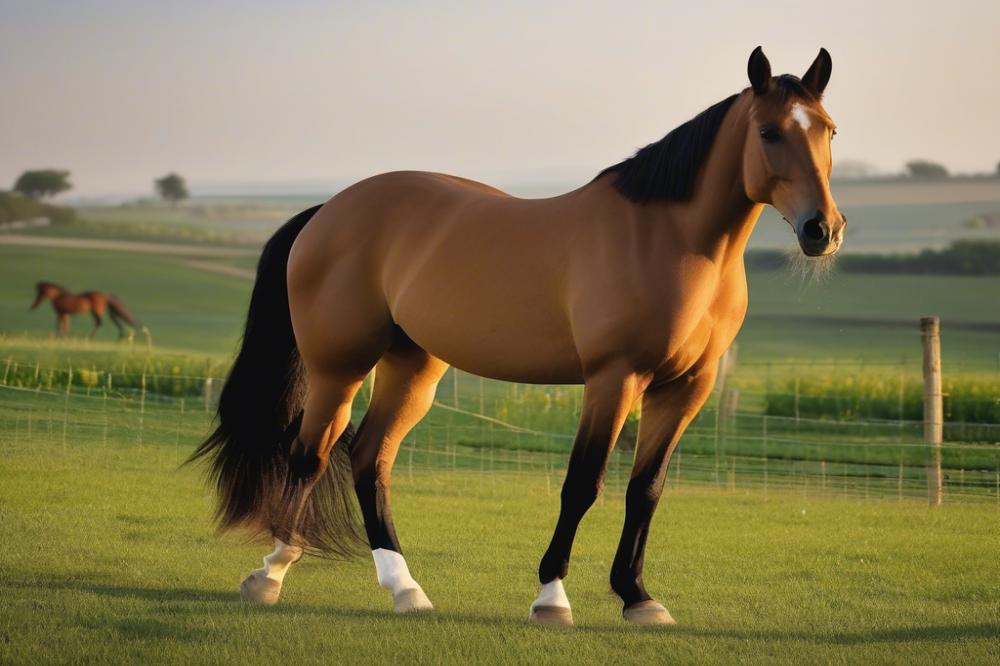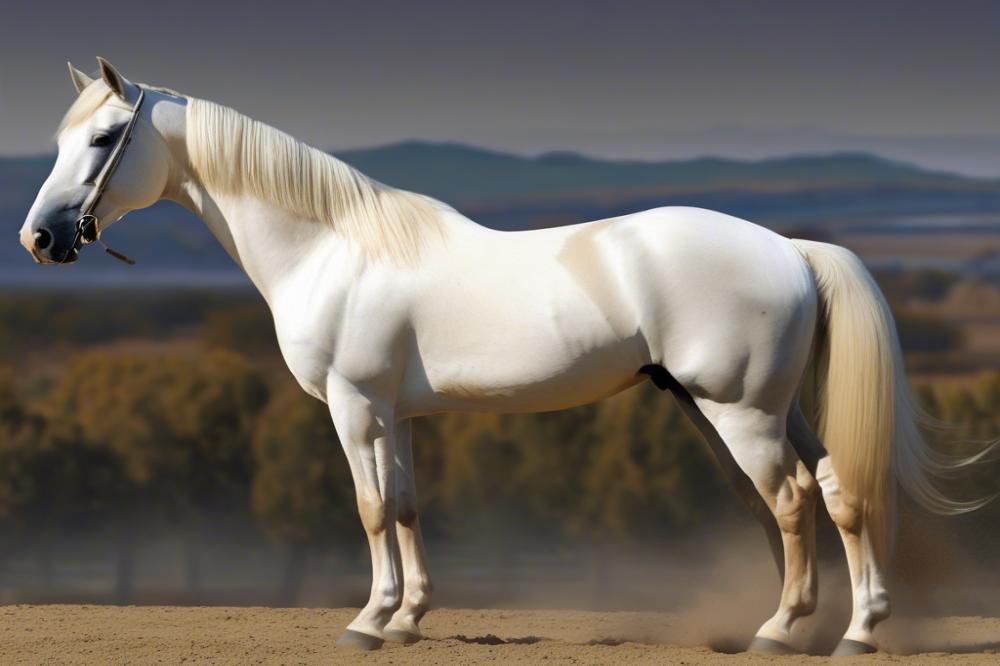The Importance of Understanding Costs in Horse Breeding
There’s no doubt that breeding horses is a captivating endeavor. However, before diving headfirst into the world of horse breeding, it’s wise to take a good, hard look at what it actually costs. Many folks tend to underestimate how much it truly takes to raise and care for a horse. From veterinary bills to feed costs and everything in between, not to mention the little surprises that crop up when you least expect them, understanding the financial commitments involved is crucial.
Many people just think about the big bucks and flashy horses they see at competitions and shows. Yet, behind every majestic equine champion lies a myriad of expenses. Especially when it comes to breeds like the Akhal-Teke, known for their stunning appearance and impressive endurance. These beautiful horses are often referred to as the “Golden Horses” because of their shimmering coats. But, don’t be fooled; owning one of these majestic creatures is far from a walk in the park!
Overview of Akhal-Teke Breed Characteristics
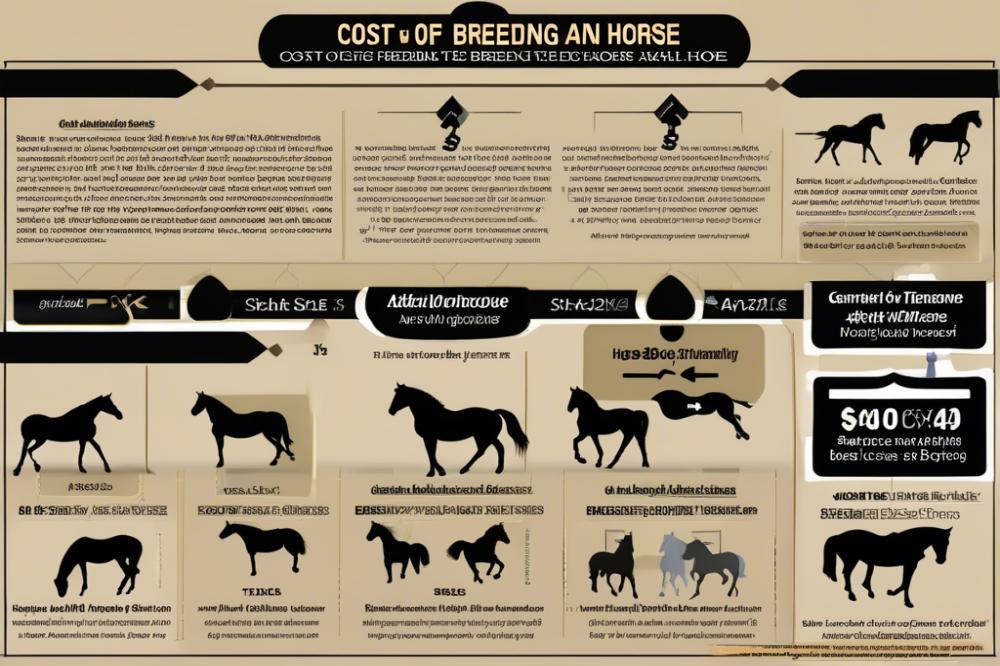
The Akhal-Teke breed hails from Turkmenistan and has a history that dates back thousands of years. They are known for their remarkable speed and agility, earning recognition as one of the fastest horse breeds. You could say they’re built like a fine sports car, sleek and aerodynamic, yet elegant and strong. Their eyes often reflect a unique intelligence, drawing attention wherever they go.
What’s not to love about their striking features? Many of these horses sport a coat that shines like a penny in the sun, and a few even have a rare trait: blue eyes! They are not only physically stunning but are also recognized for their spirited personalities. Expect a spirited horse that loves to bond with its human friends. Just imagine galloping alongside one of them, wind whipping past, feeling that perfect blend of freedom and connection!
Purpose of the Article
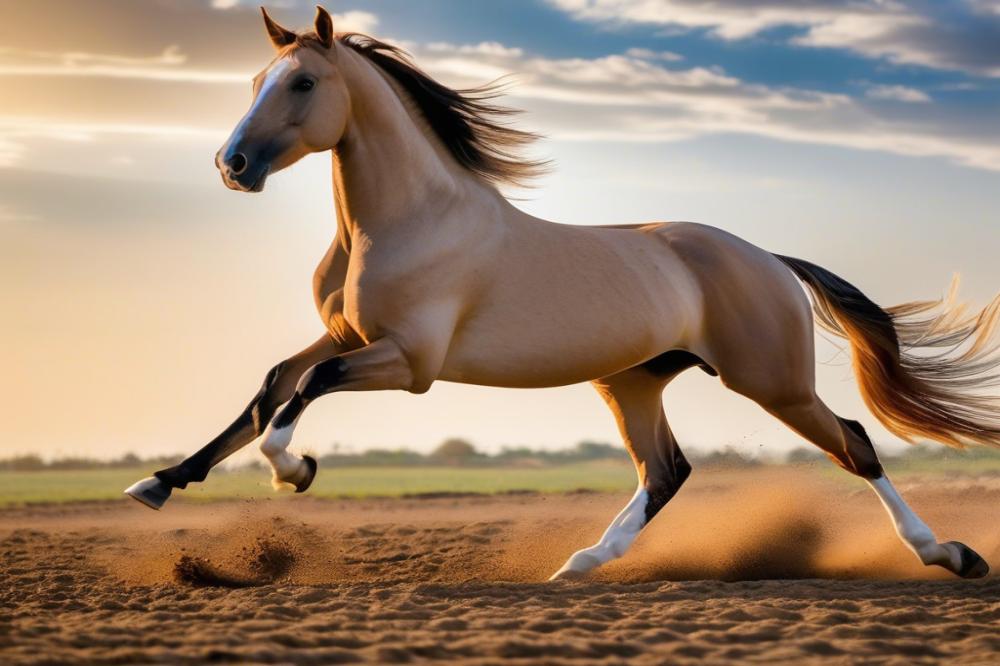
This article is your breeding guide, offering an in-depth cost analysis of raising an Akhal-Teke horse. If you’ve ever daydreamed of owning one, now is the time to get serious about the responsibilities that come along with it. We’ll explore costs related to horse care, including feeding, health checks, and training. Equine genetics can also play a vital role in breeding decisions, so knowing the ins and outs is essential.
Remember that DMSO capped hock treatment may come into play, should any physical issues arise. We’re here to break down these details for you in a straightforward way that makes sense. Buckle up as we embark on this journey together, demystifying the costs that come with bringing an Akhal-Teke into your life. After all, knowledge is power, and you want to be prepared for this thrilling adventure!
Overview of Akhal-Teke Horses
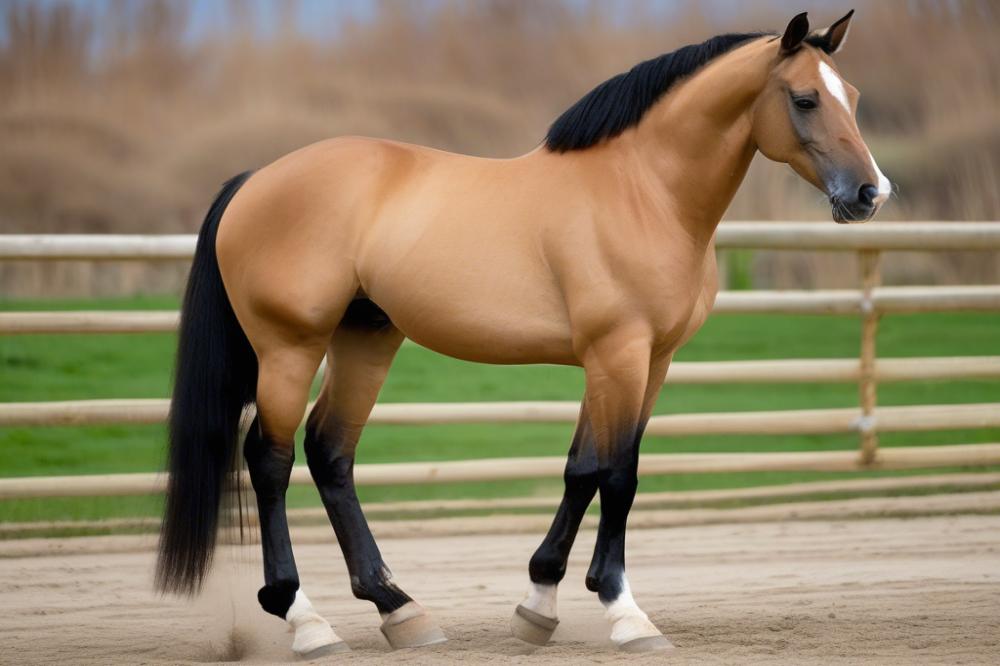
History and Origins of the Breed
Akhal-Teke horses have a fascinating history, dating back thousands of years. They originated in Turkmenistan, where they were cherished by the nomadic tribes of the area. These horses played a vital role in the culture and economy of the region. Legend says they were once known as “heavenly horses” due to their speed and endurance. The breed has survived many challenges, including wars and political changes. People admire their lineage, which is steeped in rich traditions. It’s like having a piece of history right beneath you when you ride one.
Unique Physical Traits and Temperament
When you first see an Akhal-Teke, their shiny coat may catch your eye. These horses often display a stunning gold or metallic sheen that sets them apart from others. Their bodies are built slim and athletic, perfect for those who love speed. You might even say they look like the Thoroughbreds of the desert. Temperament-wise, they can be a bit spirited, but they are also known for their intelligence and loyalty. Think of them as a loyal friend who occasionally acts a little mischievous. With proper horse care, they respond well to training and can form strong bonds with their riders.
Uses and Advantages of Akhal-Teke Horses
There are many good reasons to consider an Akhal-Teke for both recreational riding and competitions. Their incredible speed and agility shine in activities like endurance racing. Equestrian competitors often appreciate that these horses can handle different disciplines, from dressage to show jumping. The breed’s strong genetics also contribute to their athleticism, making them stand out in the equine world. For anyone involved in horse breeding, they offer an amazing opportunity to produce quality offspring. While it’s essential to keep a close eye on equestrian expenses, the value they provide is undeniable. Following a good breeding guide would be wise to understand how to maximize their potential. Nothing can top the experience of galloping on one of these magnificent creatures!
Initial Costs of Akhal-Teke Horse Breeding
Purchasing Breeding Stock
Buying Akhal-Teke horses can set you back quite a bit. The price tag varies widely based on the horse’s lineage, training, and overall health. Some reliable breeders may charge more, but remember, you often get what you pay for. Keep in mind, a good foundation is key for successful horse breeding. A high-quality mare or stallion ensures the best possible start for your breeding program.
Selecting the Right Stallion and Mare
Choosing a stallion and mare is not just a shot in the dark. It means diving deep into equine genetics. Traits like speed, temperament, and conformation matter a lot. Reading through breeding guides can help ease the selection process. You want horses that complement each other’s strengths and weaknesses. Think of it like matchmaking, but with four legs instead of two!
Registration and Pedigree Considerations
Registration often brings added costs. Yet, paperwork plays a significant role in horse breeding. A well-documented pedigree can boost the value of your future foal. It’s kind of like having a family tree that impresses everyone. Make sure to register your horses with the right associations. This not only aids in capitalizing on equestrian expenses but also builds trust in your breeding program.
Ongoing Costs of Care and Management
Feeding and Nutrition Requirements
Caring for an Akhal-Teke means paying close attention to what they eat. These horses need a balanced diet rich in nutrients to keep their coats vibrant and their bodies strong. High-quality hay, grains, and supplements are essential for good health. Imagine putting together a gourmet meal for a picky friend—every ingredient matters!
Daily feeding routines can become quite the task. Horses typically eat twice a day, and that’s just the beginning. You should also consider treats like apples and carrots. Be careful, though, as not all snacks are suitable. Researching nutrition is a key part of any horse breeding guide. Regular adjustments might be necessary depending on their age and activity level. Equestrian expenses can add up, especially if your horse has specific dietary needs due to health conditions or genetic factors.
Veterinary Care and Health Maintenance
Keeping your Akhal-Teke healthy is as important as picking the right saddle. Routine veterinary care costs can sneak up on you. Annual vaccinations, dental checkups, and deworming treatments should be expected. Plus, if anything unexpected happens, you might face emergency vet bills that could break the bank. Imagine a scenario where your horse gets into a bit of mischief—yikes!
Also, consider veterinary insurance. It’s a smart move for managing sudden equestrian expenses. Just like health insurance for humans, it can save you some big bucks in emergencies. Regular checkups help catch any health issues early. A small problem today might grow into a big one if ignored. Keeping on top of their health ensures your horse stays in top shape, ready to impress at the next show.
Housing and Stable Management
Where you house your Akhal-Teke is crucial. Every horse needs a clean, safe stable. Renting a space can vary widely in price based on location and amenities. Some folks might choose to build their own barn. Think about the structure, the bedding, and the daily cleaning—it adds up.
Barn maintenance is not just about cleaning, either. Depending on your climate, you might need to invest in heating or cooling options. An insulated barn in winter keeps your horse cozy, while proper ventilation in summer ensures air flows freely. Tack rooms, feed storage, and roaming space all contribute to the overall cost analysis of care and management.
Horse care isn’t solely about the horse, after all. Supplies, like grooming tools and health products, are additional costs. It’s easy to overlook these little expenses, but they can hit your wallet harder than a hoof on a hard floor. Proper management and a little planning can keep your finances stable while ensuring your magnificent Akhal-Teke has the best life possible.
Breeding Process and Related Expenses
Breeding Techniques (Natural vs Artificial Insemination)
Breeding an Akhal-Teke horse can happen in two main ways: natural mating or artificial insemination. Both have their fans. Natural breeding feels a bit like a romantic date for the horses. They meet, and things happen! However, artificial insemination is more like a science experiment. It’s great for equine genetics and allows access to top stallions who might be far away.
Expect different costs with these methods. Natural mating may involve travel expenses to a stallion’s location. In contrast, artificial insemination requires specialized equipment and veterinary help. Horses might be prodded and poked more than you’d think. Along with vet fees, you’ll pay for semen shipping and storage. Both techniques have their pros and cons, but they ultimately lead to the same wonderful goal—a new Akhal-Teke!
Timing and Breeding Cycles Considerations
Timing is crucial in horse breeding. A mare cycles every 21 days on average, but this can vary. If a mare doesn’t get pregnant, you’ll need to wait for the next cycle. Talk about being patient! As a breeder, knowing the right timing helps you plan all those equestrian expenses.
An expert in horse breeding can help track the mare’s ovulation. It’s kind of like keeping an eye on a teenager’s social calendar. If you miss that window, you’ll need to wait again. This adds to costs in the long run because you’re not just feeding the mare; you’re maintaining her health for a possible pregnancy.
Costs Associated with Pregnancy and Foaling
Pregnancy comes with its own list of expenses. Mare care during this time can be pricey. A proper diet rich in nutrients is essential. Supplements to support her health may just take your financial breath away. Don’t forget about regular veterinary checks to monitor the pregnancy. Things like ultrasounds can stack up quickly.
When the time comes for foaling, you want a secure and safe environment for the mare. This might mean building or updating a barn. It’s sort of like setting up a nursery for a newborn. Some breeders even hire professionals to help with the delivery, adding more to the cost analysis. Once the foal arrives, what joy! But you’ll need to plan for its health too, with vaccinations and the right amount of nutrition.
Considering all these factors will help you understand just how intricate horse care can be. For someone new to the world of horse breeding, it may feel overwhelming. However, being informed lets you make better decisions throughout the process. Breeding an Akhal-Teke horse isn’t just about the magic moment; it involves planning, patience, and, yes, quite a bit of cash!
Training and Development Costs
Early Training for Foals
When it comes to raising a foal, early training is crucial. It’s like teaching a child their ABCs before they can read. Foals need to begin with simple groundwork and handling. Spending money here pays off later. A basic training package can range from $500 to $2,000. This initial investment introduces the young horse to grooming, leading, and other essential skills.
Now, think of the first few months as the foundation of a sturdy house. If you build right, everything else stands strong. It helps the foal learn about human interaction and prepares it for more advanced training down the line. The more time spent in early training, the better the future performance will be.
Costs of Training for Performance
Training for performance is another kettle of fish. This phase can really add up. Programs typically focus on speed, agility, and endurance. Each one comes with its own set of costs. Hiring an experienced trainer is a big part of this expense. Monthly fees might land anywhere from $800 to $2,500. That’s not pocket change!
Don’t forget about specialized training in riding or jumping. Akhal-Tekes shine in various disciplines, making this training vital. Those costs vary based on the facility and location. It’s essential to choose a trainer who understands equine genetics. They can maximize your horse’s potential.
Long-Term Care and Performance Preparation
Long-term care is just as important as training. This means regular veterinary check-ups, dental care, and proper nutrition. Think of it like a regular tune-up for a car. Keeping your horse healthy will save money in the long run. Annual veterinary care can be between $500 and $1,500. That’s on top of everyday horse care expenses.
Preparing for competitions adds another layer of costs. Entering shows and events brings registration fees and traveling expenses. From gas to accommodation, it can become quite an equestrian expense. Budgeting for these events is essential. Competitions are stressful but can be so enriching.
Consider giving your horse time off between competitions. Rest is crucial not just for athletes, but for horses too. Training and events can be tough. Balancing performance preparation and care is key to a successful journey in horse breeding.
Potential Financial Returns and Market Value
Understanding the Market Demand for Akhal-Teke Horses
The Akhal-Teke horse has a special charm that attracts enthusiasts. Many horse lovers appreciate their striking looks and exceptional stamina. This breed is often featured in equestrian competitions, boosting its appeal. While the market for these horses isn’t as large as for some other breeds, there is a dedicated audience. Enthusiasts of equestrian activities often seek unique traits in their horses. This presents an opportunity for breeders to meet specific desires. As more people learn about this breed, demand can steadily grow.
Evaluating Potential Resale Value
When considering breeding, potential resale value is a crucial factor. Prices for Akhal-Teke horses can vary widely, depending on several elements. Young horses can fetch a good price if they boast excellent lineage and strong equine genetics. Quality training and care increase their worth. If you master the horse care aspect, your investment can pay off nicely. Imagine selling a beautifully trained Akhal-Teke for a respectable amount; it feels rewarding! Keeping an eye on market trends may help you decide the best time to sell.
Factors Influencing Profitability in Breeding
Several factors impact the profitability of horse breeding. First, the initial costs can be high, including equestrian expenses for feeding, veterinary visits, and other essentials. You can’t forget about the breeding guide that may offer valuable insights. Choosing the right stallion is also crucial, as genetics play a huge role in the foal’s future value. Breeders should prioritize not just appearance but also temperament and suitability for riding or show. All of these aspects work together, like a well-coordinated dance.
Consider the economic environment too. If the market is strong, pricing can be higher. However, if more breeders enter the scene, competition rises, leading to potential lower prices. As you evaluate your plans, think about keeping your horses in top condition. This attention to horse care can elevate their status. So, whether you view this as a hobby or a business venture, careful planning and a little patience go a long way toward success.
Wrapping It Up
Well, we’ve reached the end of our in-depth chat about the costs related to breeding an Akhal-Teke horse. It’s been quite a ride, hasn’t it? We’ve talked about everything from the initial expenses of acquiring quality stock to the ongoing costs of care, training, and health management. The key takeaway here is that breeding these stunning horses requires a mix of passion, commitment, and, yes, a well-planned budget.
When it comes to managing the costs, staying organized is paramount. A solid plan can work wonders. Think about health care, feed, and facilities as long-term investments rather than short-term splurges. After all, these horses aren’t just a pretty face; they embody a rich history and cultural significance. And trust me, no one enjoys seeing a horse foaming at mouth from nervousness or discomfort when it could be happy and healthy instead.
If you’re considering stepping into the world of Akhal-Teke breeding, doing your homework is essential. Research is your best friend here. Talk to experienced breeders, visit farms, and join online forums. Ask questions like, “What does horses sit do?” Learn from those who have navigated these waters before. Knowledge is power, and the more you gather, the better equipped you’ll be to handle the ups and downs of the journey.
In conclusion, whether you’re a dreamer or a doer, embracing the challenge of horse breeding requires not just love for the animal but also a practical approach to finances. Stay curious, keep learning, and remember that every penny spent is an investment in a lifetimeBond with a magnificent creature. Good luck on your breeding adventure!

